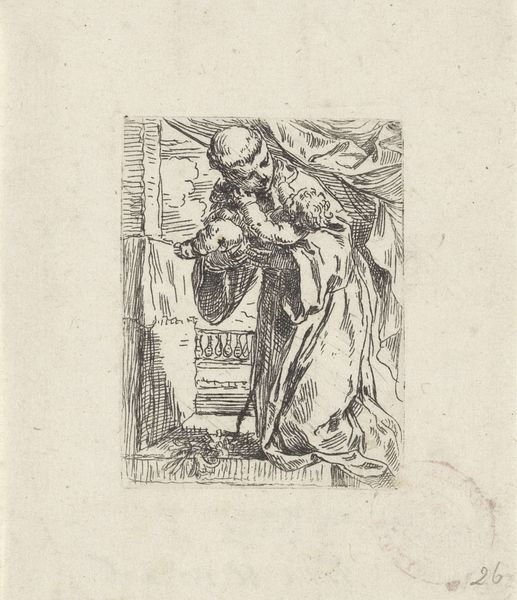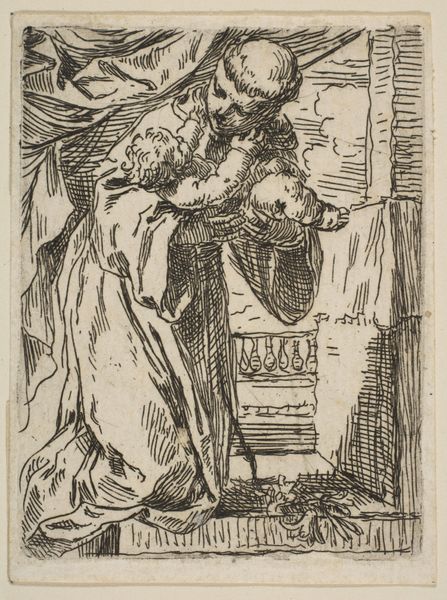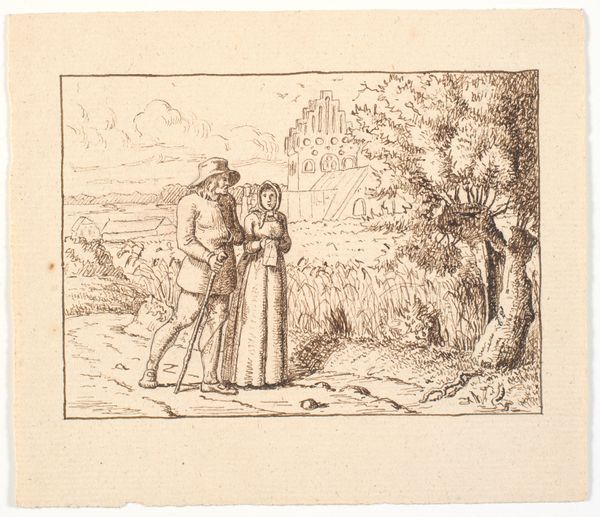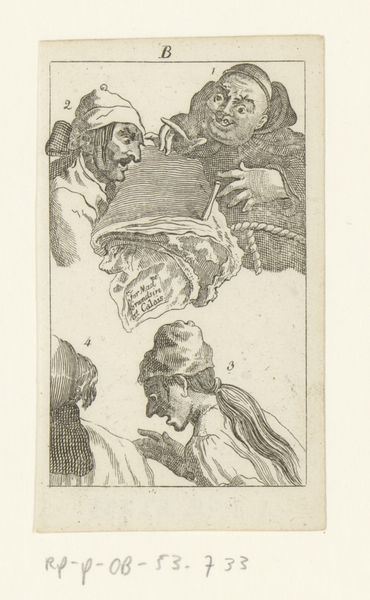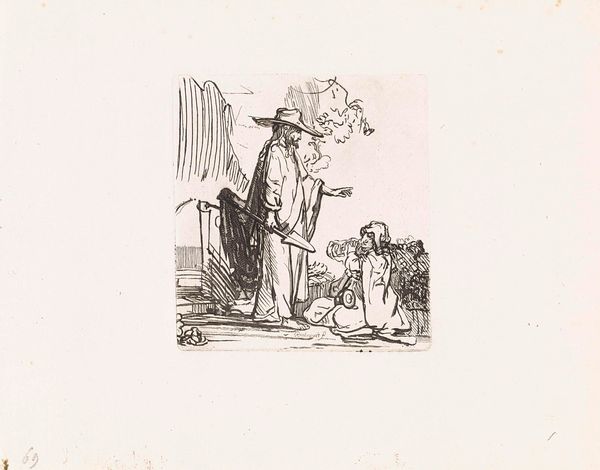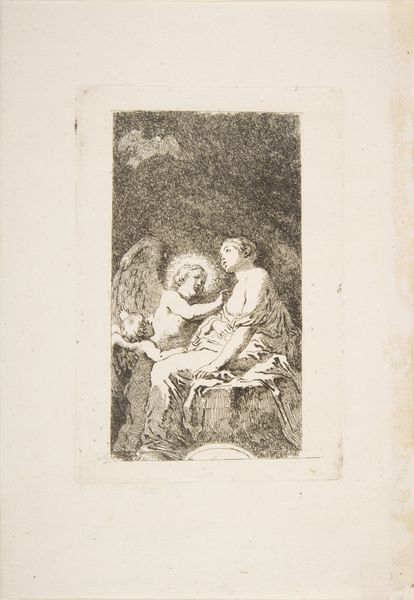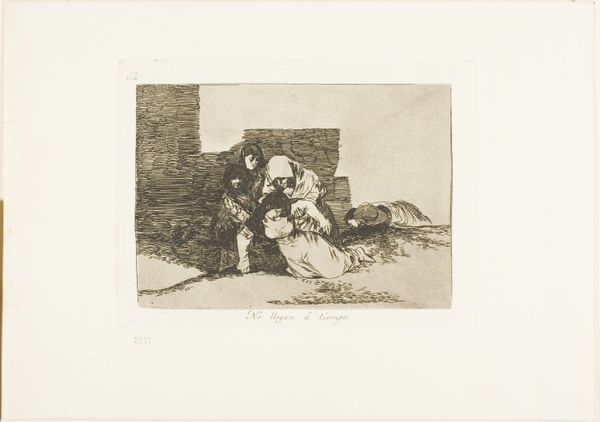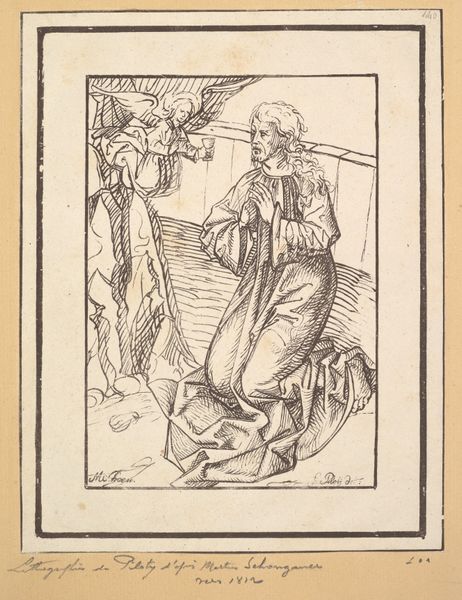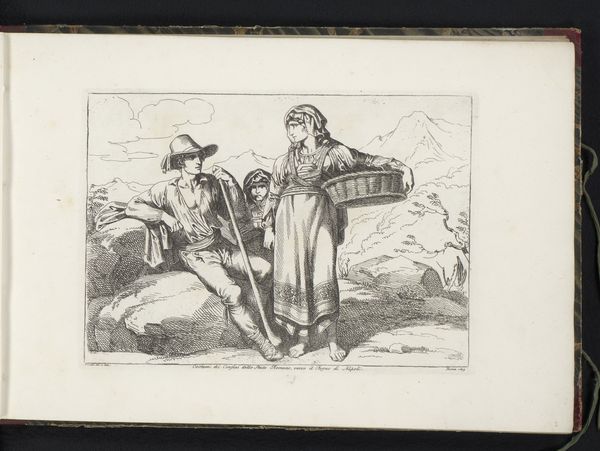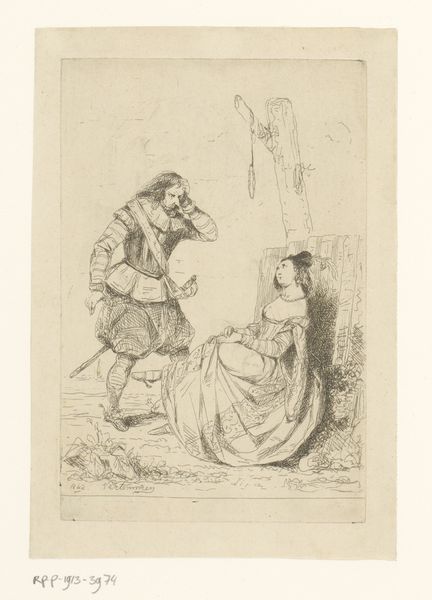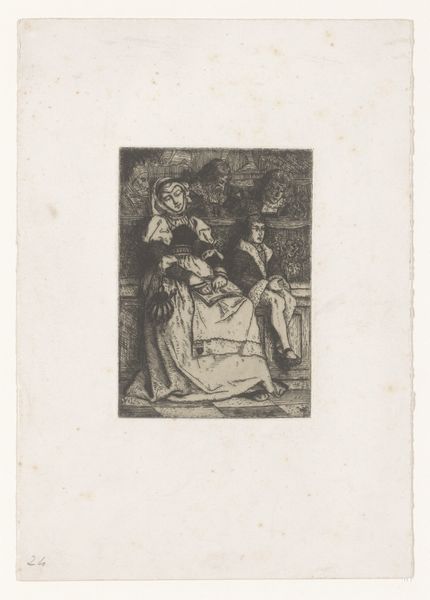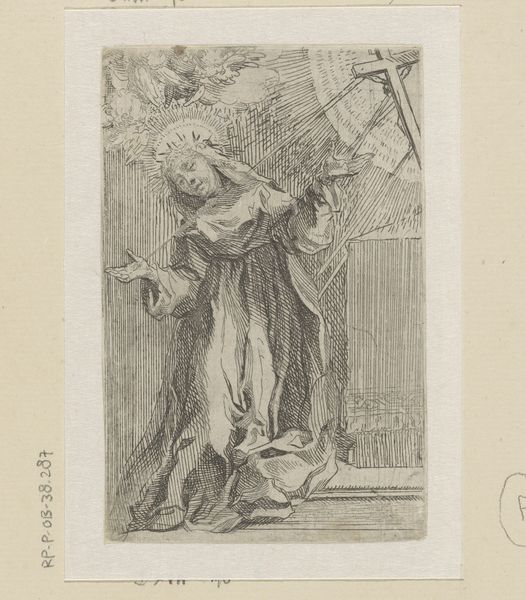
print, woodcut, engraving
# print
#
pen illustration
#
landscape
#
figuration
#
ink line art
#
woodcut
#
line
#
northern-renaissance
#
engraving
Dimensions: height 91 mm, width 67 mm
Copyright: Rijks Museum: Open Domain
Curator: Here we have "Christ as the Good Shepherd," an engraving made around 1527. It resides here at the Rijksmuseum, an evocative work from an anonymous hand. Editor: The mood is somber, yet serene. The stark line work creates an image of gentle solemnity, doesn't it? One senses a profound weight carried by the figure, intensified by the material economy of the woodcut medium. Curator: Precisely. Note how the artist used contrasting lines to articulate depth and volume. The halo's radiant lines beautifully offset the figure of Christ with the lamb. The formal structure employs an economy of visual elements to convey a powerful message. Editor: The lines do more than delineate form; they speak to the labor of its creation. This wasn't quickly dashed off; there's a tangible commitment of time, energy, and skill inherent in each mark of the burin, wouldn't you agree? We should acknowledge that. Curator: Indeed. And from a symbolic reading, the figure carrying the lamb becomes an explicit signifier of compassion and sacrifice. The carefully arranged forms create meaning, guiding the viewer to contemplate the narrative and spiritual depth. Editor: Consider, too, the context in which this print was made, though by an anonymous artist: accessible prints like these disseminated religious themes far beyond the reach of illuminated manuscripts and panel paintings enjoyed by wealthy elite. Material availability influencing spiritual instruction. Curator: You've touched upon a crucial point. These smaller scale prints provided affordable avenues for experiencing complex theology through concise visual language, reaching varied audiences and promoting widespread visual literacy. Editor: What moves me, ultimately, is thinking of the hands that produced and handled this artwork: the tools employed, the hours devoted, the very material essence of making this art object which held value across socio-economic divides. Curator: Yes, you offer an insightful way of understanding how its formal and thematic features continue to resonate even now. A synthesis of visuality and spirituality indeed. Editor: Precisely, the endurance of the material object allowing continued cultural transmission, shaping the symbolic landscape of faith, then and now.
Comments
No comments
Be the first to comment and join the conversation on the ultimate creative platform.
